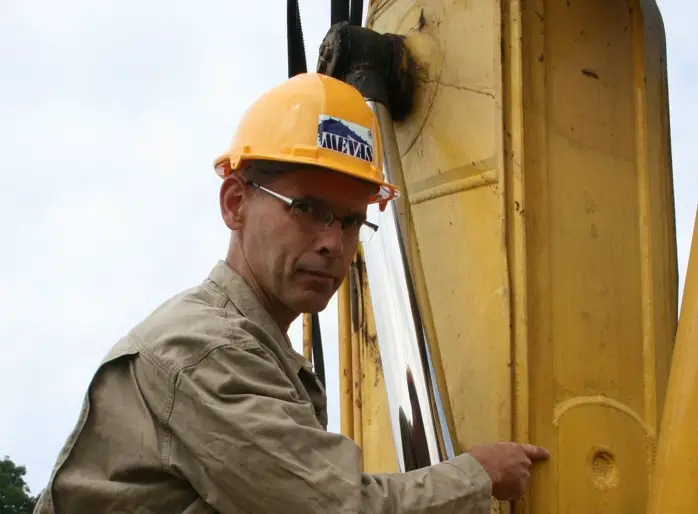In his book “The World Is Flat” the American author Thomas L. Friedman describes the big changes caused by globalization and the visibility of things through the Internet. The world is flat means to him: Everyone can see everything and everywhere. The new technologies make it possible to access all information in any place in the world at any time.
Is the world really flat and is all information accessible for everyone at any time? The answer is Yes and No. As a buyer of used machinery or trucks you may have already experienced it. You can find various databases where used equipment is listed for sale. The age, the working hours, the mileage and the features of a truck or crane are available. The supplier gives a description of the goods and has in many cases listed a sales price. That is the flat part of our new world. At the point when you go deeper in a specific equipment offer you will sooner or later come to the bumpy part of the world. On one hand all information is available through the Internet. On the other hand, there is very limited control what content is added to the World Wide Web.
Of course there is a good chance to find quality equipment for reasonable pricing. A few machinery websites such as Machinerytrader or Machineryzone check the suppliers before they can list any machine or truck. But apart from these there is big gray area. Many listings in machinery websites are far away from being true. Many listed equipment does not exist, many machines are not in thelocation that is listed and others have a very optimistic description of condition.
What now if you intend to purchase secondhand machines and the suppliers in your place haven’t the right piece? Buying new is maybe too expensive. Traveling thousands of miles to see a single machine or two is not reasonable. How can you be on the safe side when importing goods?
1. Determing your needs
First of all it is recommended having a clear idea what machine or truck you need. What is the correct size and weight; what features are essential?
2. Service support
Second important point is: Where is the next available store for parts and service? Many standard parts you can buy aftermarket, the so-called
non-OEM parts. But for specific spare parts you will need an OEM supplier. When the machine has problems with the hydraulic system adjustments or with an electronic component you will need to call a service provider that knows your machine very well and is equipped with the necessary tools
for checking and adjusting these components.
3. How much do you need
Once you have a clear idea about the kind and size of equipment you need to check your budget and probably you need to talk to your bank for financing. If that point is solved you can start looking for machines or trucks.
4. Sourcing
But where to look for it? The author has listed a selection of websites for used equipment at www.used-equipment.de. There are other sources, but from our experience the listed sites have a higher probability to have added only existing equipment.
5. Meeting the seller
Now it is time to get in direct contact with the supplier. Ask him for all equipment details, related components such as shovels or excavator buckets. Ask for necessary repairs and when the last service was done. Have the seller to send you a legible picture of the serial number plate. For a
machine that is in his property he will not hesitate sending it straight away.
Be carefully if a deal appears to be very good. The world is flat means: everyone can compare prices. If a machine is offered 20% below the normal market price or even cheaper there must be something
wrong. Avoid getting involved in trading with stolen equipment.
6.Inspection
What would be the best way to verify the quality of machinery? How can you gain information about the reliability and reputation of a supplier? It would be costly to send your own technician to Europe, to China or to the Emirates to check a machine. Apart from the fact that you would need a visa in many cases it would be time-consuming and traveling is costly even with budget flights not really cheap.
It would be more reasonable hiring a mechanic of a local workshop from a dealer of your preferred brand. And, a Putzmeister or Sanny technician should be able to check any concrete pump. A Komatsu or Hitachi technician should be able to check any excavator or wheel loader.
But the better way is probably using a service provider that is specialized in used machinery inspections. Some companies around the world provide such service. In our experience the cost for a single machine inspection is somewhere between 600-1.000 USD. If the machine is in a remote area
the cost might be higher. With an inspection report in your hand you will be able to discuss with the machine supplier a price discount or repairs. Often the negotiated amount will extend the cost of the inspection. In the worst case, if machine is in bad condition you will probably not buy it. But the
amount you paid to the inspectors will protect you against importing of equipment with extended follow-up cost.
My answer to Thomas L. Friedman would be: Yes, the world is flat. But it is not flat enough to trust all
information you can find at the internet. You still should be carefully and vigilant.
Wolfgang Bühn
Mevas Machinery Evaluation Services, Germany
